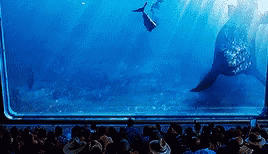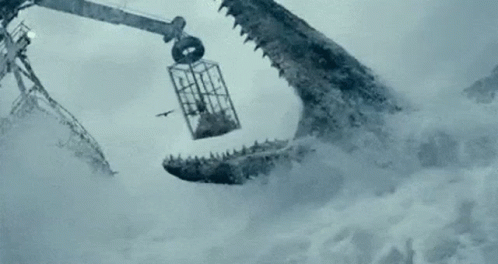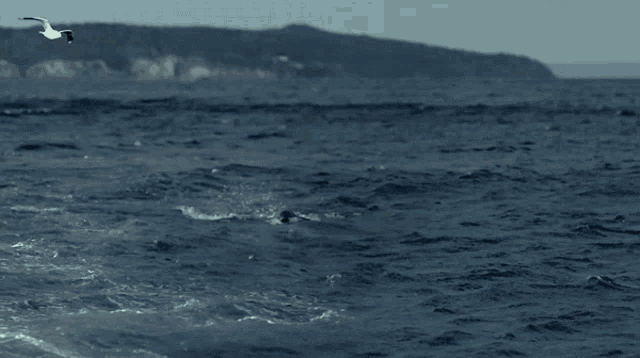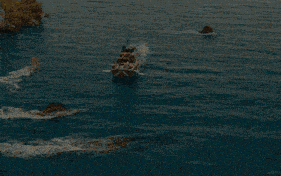Cars & Bikes

Mosasaurus: The Aquatic Apex Predator That Stole Jurassic World
May 09, 2025 6 min read
"The Mosasaurus hunted where the ocean kissed the sky — just beneath the surface — striking down anything it could sink its knife-like teeth into. Turtles, sharks, massive fish… even its own kind weren’t safe."
— Dr. Sarah Harding (source)
The Mosasaurus was a true apex predator of the Late Cretaceous seas, reigning from about 70 to 66 million years ago. As one of the largest marine reptiles in history, this oceanic leviathan stretched up to 17 meters (56 feet) and weighed an estimated 10 tons. Its power and size inspired the name of an entire family of marine lizards: Mosasaurs.
Named after the Meuse River near where its first fossils were discovered, the name "Mosasaurus" literally means "Meuse lizard." This formidable carnivore dominated prehistoric oceans, feasting on an astonishing variety of prey — from seabirds and sharks to plesiosaurs, and even smaller mosasaurs, making it one of the most feared hunters of its time.
Characteristics

The Masrani Global Mosasaurus, the iconic deep-sea titan introduced in Jurassic World, was a faithful recreation of its Cretaceous ancestor — with a few engineered twists. This cloned marine giant boasted an astonishing bite force of 13,000 pounds, outclassing even the mighty Tyrannosaurus rex, which shared the same late Cretaceous timeline. Unlike the sleek ocean predators of today, the Mosasaurus had a distinctive frill-like ridge running down its spine, and notably lacked a forked tongue and the large tail fluke seen in some reconstructions. Its coloration was a striking greyish-blue topcoat, paired with a creamy underbelly, ideal for blending into the ocean depths.
Interestingly, the Mosasaurus stands among the largest non-hybrid dinosaurs ever cloned, alongside giants like the Quetzalcoatlus and Titanosaurus.

However, InGen’s newly revealed clone, slated for an appearance in the upcoming Jurassic World: Rebirth, seems like an evolutionary leap — or rather, a return to authenticity. This version abandons the crocodilian armor and instead showcases a sleek, streamlined skin, reminiscent of the real fossil record and optimized for hydrodynamic dominance. Most notably, this version includes a pronounced tail fluke, giving it a more accurate marine profile. While still lacking a bifid (forked) tongue — despite its snake-like ancestry — this Mosasaur boasts a darker dorsal tone paired with a contrasting white underbelly, displaying classic countershading used by real-world marine predators to stalk and ambush prey from the depths.
Size Estimates
The cloned Mosasaurus has long been a subject of size speculation — and for good reason. This awe-inspiring marine predator has appeared in various films, exhibits, and official sources, with its sheer scale fluctuating depending on context and narrative needs.
Across multiple sources, the length of the Mosasaurus clone has been reported as:
-
16 meters (55 feet) – One of the more conservative estimates, often cited in early promotional material.
-
18 meters (60 feet) – A common figure that aligns with the Jurassic World lagoon enclosure scale.
-
22 meters (72 feet) – Frequently referenced in official tie-in materials and behind-the-scenes content.
-
25.9 meters (85 feet) – A dramatic upgrade reflecting the Mosasaur’s growing cinematic presence.
-
36.6 meters (120 feet) – The most extreme estimate, typically linked to fan debates and expanded universe sources, suggesting a truly colossal leviathan of the deep.
Whether she’s snatching sharks mid-leap or dragging hybrids into the depths, the cloned Mosasaurus continues to grow in both legend and scale — a testament to InGen’s ambition and cinematic spectacle.
Behavior

The Mosasaurus of Jurassic World is a fearsome apex predator, renowned for its formidable appetite — particularly for great white sharks, which it hunts with precision and power, often following their migratory paths like a seasoned tracker of the sea. While sharks may be its favored prey, the Mosasaurus isn’t picky. It has been seen devouring Pteranodons, humans, and even dragging an Indominus rex to its watery doom in one of the franchise’s most iconic moments.
Interestingly, despite its immense size and strength — even capable of lunging onto land — the Mosasaurus doesn't appear to actively target humans near the lagoon’s edge, suggesting a degree of restraint or perhaps territorial behavior. Its dramatic ambush on the Indominus, however, indicates that it may respond aggressively to threats or disturbances within its domain.
The InGen original clone, set to reappear in the upcoming film, exhibits a fascinating behavioral twist: it shares a symbiotic hunting relationship with the cloned Spinosaurus. The two prehistoric titans are said to coordinate attacks — with the Mosasaurus leaping onto boats to cause chaos, allowing the Spinosaurus to capture its prey. Together, they patrol their territory and feast on large marine creatures, forming a strategic alliance rarely seen in cloned prehistoric species.
This complex and sometimes surprising behavior paints the Mosasaurus not just as a brute force predator, but as an intelligent and adaptive marine reptile — one whose actions in the wild and captivity continue to fuel both awe and curiosity.
History of the Mosasaurus: From Lost Clone to Ocean King
The Original Creation
Long before it became a global icon, the first cloned Mosasaurus was quietly engineered on an unknown island during the 1980s. However, chaos quickly took hold — a rampaging mutant dinosaur laid waste to the InGen lab, forcing scientists to abandon their aquatic experiment.
Left behind and forgotten, the Mosasaurus miraculously survived for over four decades, carving out a place for itself in the island’s ecosystem. It shared this mysterious land with another abandoned creation — the Spinosaurus — which is believed to have played a key role in its survival.
The New Creation
Fast forward to August 25, 2000. While testing a prototype iron analyzer, InGen researchers stumbled upon trace DNA fragments embedded in a recently excavated mosasaur fossil. Dr. Henry Wu, always at the frontier of genetic innovation, saw this as a breakthrough: a way to clone marine life without relying on amber-preserved mosquitoes.
The result? A successful resurrection of Mosasaurus maximus, a gigantic marine predator, now synonymous to the scientifically recognized M. hoffmannii. This cloned beast was introduced to the world as the crown jewel of Jurassic World, Masrani Global’s next-generation dinosaur theme park.
Residing in a 3-million-gallon saltwater lagoon near Main Street, the Mosasaurus became the star of the Mosasaurus Feeding Show, where guests could witness it snatch whole sharks from above the water — or view it gliding through the depths via the Underwater Observatory.
The Jurassic World Incident

Among the many who marveled at its power were Gray and Zach Mitchell. But the park’s wonder quickly turned to horror when chaos broke loose. During the Pterosaur breakout, the Mosasaurus intervened, devouring a Pteranodon mid-flight, along with Zara Young, who was caught in its grasp.
Its most legendary act, however, came during the climax of Jurassic World. As Rexy, Blue, and the Indominus rex clashed in a brutal showdown, the Mosasaurus erupted from the lagoon, dragging the hybrid dinosaur to a watery grave — sealing its fate and stunning audiences worldwide.
Aftermath and Escape

Believed to be dead in the aftermath, the Mosasaurus later reemerged in a dramatic turn. As a submarine descended to collect the remains of the Indominus rex, the Mosasaurus ambushed and destroyed the vessel. With the gates left open, it escaped into the open ocean, now a free-roaming apex predator.

It would go on to attack Darius Bowman and his crew, sinking their ship and stranding them on a new island. In haunting scenes, Yaz even dreams of the beast smashing through ice in a nightmare — a chilling reminder of its looming threat.
A Global Presence

Following the events of Fallen Kingdom, the Mosasaurus starred in the A Rising Tide motion comic, launching a surprise attack on surfers off Oahu’s north shore. It then made a brief but memorable appearance in Battle at Big Rock, catching a breaching shark during the end credits.

By 2022, sightings reported by the Department of Prehistoric Wildlife confirmed its migration through the Pacific Ocean, from San Francisco to Okinawa to New Zealand. In a fascinating twist, the Mosasaurus was observed hunting alongside orcas, tracking great white sharks across their migration routes — and even overturning a crab fishing boat in the Bering Sea.
At the end of Jurassic World: Dominion, it is seen peacefully swimming with humpback whales, a breathtaking visual that hinted at a new chapter in its story.
Jurassic World: Rebirth

In the upcoming Rebirth, eagle-eyed viewers will notice anomalies in the new Mosasaurus design. Now sporting shark-like fins along its back, this could be the result of a genetic error — or a deliberate modification. The truth will be revealed on July 2nd, as the next evolution of the Mosasaurus prepares to surface once more.
Subscribe
Sign up to get the latest on sales, new releases and more …
